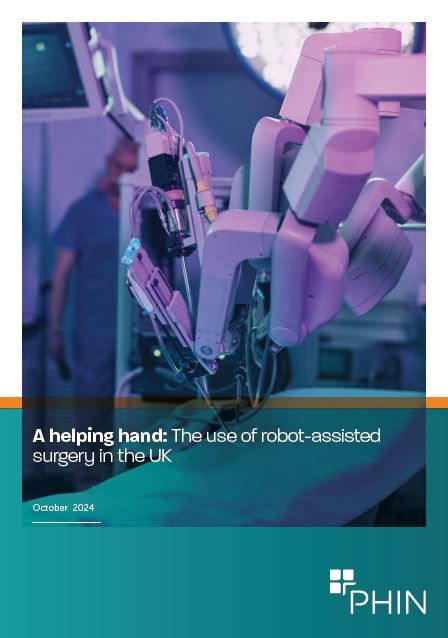Data published in a new report, ‘A helping hand – The use of robot-assisted surgery in the UK’ shows that there has been a dramatic rise in the number of robot-assisted surgeries taking place in the UK over the past seven years.
The Private Healthcare Information Network (PHIN) – the independent, not-for-profit company which collects data to help patients make more confident decisions – published the report using data it collects from private hospitals across the UK and the NHS.
January to March (Q1) 2024 saw more robot-assisted procedures conducted in both the NHS and private sector than any other quarter since data began being collected (Q1 2016).
There were 22,700 robot-assisted procedures conducted in Q1 2024. This represents an increase of 45% for the combined NHS and private sector, when comparing to the equivalent period in 2023 and a 12% increase on the last three months of 2023.
Between 2016 and 2023, there was an overall rise of 524% across the NHS and independent sector in robot-assisted surgeries. Growth was even more significant (1,370%) in the private sector, although the total number of operations is much smaller than in the NHS.
Improved patient recovery
Dr Ian Gargan, PHIN Chief Executive, said:
“Our exclusive data shows a rapidly increasing use of robots by surgeons. Having this support can aid accuracy with less invasive surgical approaches possible, and the data shows improved recovery rates, fewer complications and shorter lengths of stay in hospital. The use of robot-assistance would therefore appear to offer opportunities increase the number of patients treated and to reduce waiting lists.
“The report looks into the volume and main types of procedure using robot-assistance, as well as demographic factors such as where the procedures are being conducted and on which patients.
“The robots are most often used on the highest volume procedures, such as hip and knee replacements, so being able to use them to speed up procedures and reduce complications will help surgeons to conduct more of the types of operations most people are waiting for.
“We don’t see any reason why huge increases in the use of robot assistants wouldn’t continue. Cost is a factor, but the benefits seem to show that the return on investment makes their use worthwhile.
“The surgical and economic benefits point toward greater use of robots, especially in orthopaedics and urology. Artificial intelligence will also further assist this valuable new technology in the near future.”
PHIN publishes a wide range of healthcare data to support the growing number of people considering private treatment. According to PHIN’s data there were over 800,000 private hospital admissions in the past year.
What is robot-assisted surgery?
Robot-assisted surgery refers to a type of surgery where a robot is used to assist the surgeon in performing a procedure. With extensive planning, involving surgical technicians, the robot assists the surgeon, allowing them to make the most of their time and skills.
The robot provides precise movements and enhances the surgeon's capabilities, often allowing for more precision and flexibility in complex surgeries. It's like having a high-tech assistant helping the expert surgeon during the operation.
